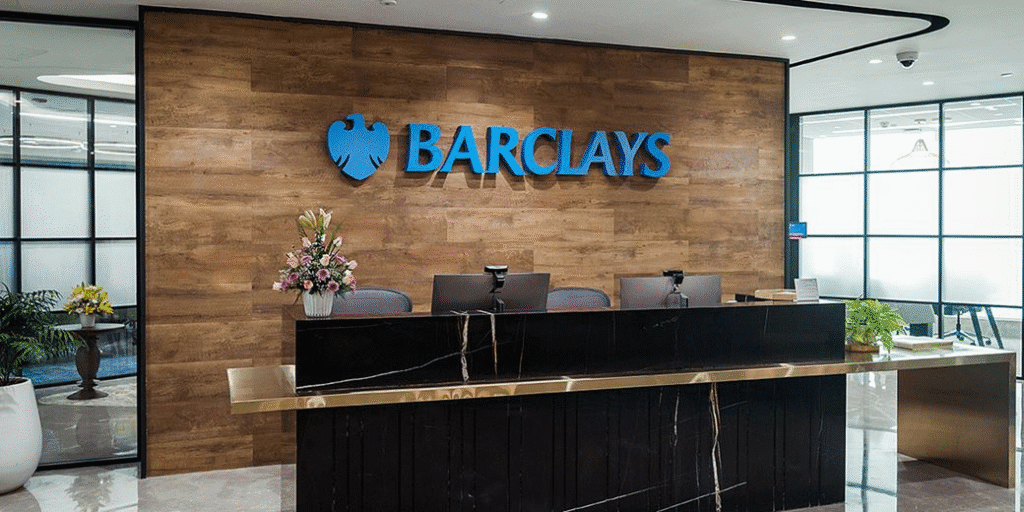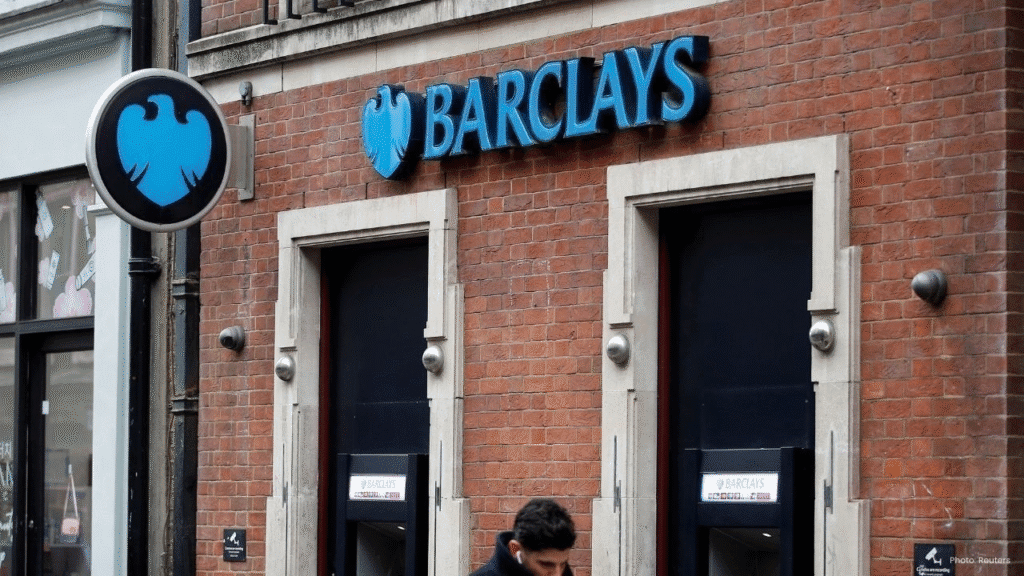A Major Milestone for Barclays in the Middle East
The global bank Barclays PLC has taken a decisive step by securing a licence in Saudi Arabia and announcing plans to open an office in Riyadh by 2026. This development signals a strong vote of confidence in the Kingdom’s evolving financial landscape, and reflects Barclays’ ambition to deepen its presence in the Middle East region.
Barclays’ move comes at a time when Saudi Arabia is actively opening its doors to international financial institutions and positioning itself as a global hub for investment and banking. By obtaining the licence and committing to a physical presence in Riyadh, Barclays is aligning itself with this wider transformation, showing that it sees not just opportunity but also strategic promise in the region.
Why the Saudi Market Matters Now
Saudi Arabia is undergoing a transformation. Its economy is diversifying, capital markets are evolving, and the regulatory ecosystem is becoming more welcoming to international players. For Barclays, the timing is right. By entering now, the bank stands to benefit from early positioning in a market where global banks are increasingly engaging.

For Riyadh, having a major global bank establish a licence and office adds to the credibility and momentum of its financial reform agenda. It brings international standards, expertise, and the potential to catalyse further investment flows. In many ways, this move represents a win-win: Barclays gets a strategic foothold; Saudi Arabia gets a boost to its global financial ambitions.
What Barclays’ Licence Means in Practice
Securing the licence unlocks several possibilities. It means Barclays can operate in new ways within Saudi Arabia—providing advisory services, corporate banking, capital markets access, or other financial solutions that align with local demand. With a physical office planned in Riyadh, Barclays will also have a local team on the ground, closer to clients, regulators, and partners.

This local presence is more than symbolic. It allows stronger relationship building, better understanding of the home market’s dynamics, and the flexibility to adapt products and services for Saudi clients. Equally, it signals a long-term commitment rather than a short-term experiment. Barclays’ decision to embed itself in Riyadh by 2026 shows that this is about sustainability and growth, not just a symbolic entry.

Why 2026? A Strategic Timeline
The 2026 timeline gives Barclays time to build infrastructure, staffing, partnerships, and regulatory compliance measures. Transitioning into a new market often involves many moving parts — from obtaining regulatory approvals to hiring locally, setting up offices, and aligning strategic priorities with regional practices.
By setting the goal for 2026, Barclays gives itself breathing space to do things thoughtfully and solidly. This approach helps avoid rushed mistakes and underscores that the bank intends to lay down firm roots rather than simply test the waters. For Saudi Arabia, this also means that the institution will be ready to hit the ground running when the office opens.
Potential Benefits for Clients and Partners
For clients — whether Saudi companies, multinational corporations operating in the Kingdom, or wealth-holders seeking international finance solutions — Barclays’ presence can bring added value. It offers access to global banking networks, deeper capital markets connectivity, and a bank with a long track record of international operations.
Partners such as advisory firms, local banks, fintechs, and regulators may also find opportunities in collaboration. A global bank embedded locally can bring standards, new services, and cross-border capabilities. For example, local businesses in Saudi Arabia might find it easier to tap international capital if Barclays supports them on-the-ground.
Challenges and Considerations
Any major move comes with risks. Operating in a new market means adapting to local regulations, business culture, talent sourcing, and competitive dynamics. For Barclays, success will depend on how well it integrates into Saudi Arabia’s ecosystem — not just opening an office, but meaningfully connecting with clients, local institutions, and the regulatory environment.
Moreover, competition is increasing: many global banks are eyeing Saudi Arabia, as the reform agenda and growth potential become more apparent. Barclays will need to differentiate itself, build local credibility, and sustain momentum. The timeline to 2026 is helpful, but it also sets expectations for delivery. Success will depend on execution—how quickly and effectively the bank moves, builds relationships, and drives impact.
Strategic Implications for Barclays
For Barclays, this is a strategic pivot. Expanding into Saudi Arabia aligns with a broader shift toward regions with high growth potential. It represents an evolution from traditional markets into emerging ones where banking services and advisory work are growing. By investing now, Barclays is positioning itself for long-term advantage.
It may also diversify the bank’s geographic footprint, reducing dependence on any single region and spreading its global presence. The move can enhance Barclays’ profile in the Middle East, open up new business lines, and reinforce its investment banking credentials in markets undergoing transformation.
Implications for Saudi Arabia
For the Kingdom, the entry of a global bank like Barclays serves as validation of its financial reform efforts. It helps attract more foreign business, increases competition, improves services, and potentially draws talent and investment. Barclays’ presence can support the growth of local capital markets, corporate finance activity, and international connectivity.
Additionally, this kind of commitment sends a message to other global firms: Saudi Arabia is open for business. It strengthens the narrative that the country is not just a raw resource economy but is maturing into a sophisticated financial ecosystem where foreign banks play a meaningful role.

What to Watch Moving Forward
In the coming years leading up to 2026, there are several key indicators to monitor: How many new clients does Barclays sign in Saudi Arabia? How many local hires and partnerships does it establish? What services will it prioritise — corporate banking, investment advisory, wealth, or all of them?
Also important will be the regulatory environment: How smoothly does Barclays obtain all necessary approvals? How will Saudi reforms evolve? Finally, the competitive landscape: How will Barclays differentiate itself from other global banks entering Saudi Arabia? The answers to these questions will determine how much impact the bank’s move ultimately makes.
Humanising the Story
Behind the corporate titles and financial metrics, there are people and teams working to bring this vision to life. The bankers setting up the Riyadh office will be learning a new market, building new relationships, and adapting global practices to local realities. Saudi clients will be evaluating a new partner, deciding how this global bank can serve their needs. Local staff will be joining a global institution, bringing local knowledge and shaping the new presence.
This story is about more than licences and offices—it’s about bridging cultures, connecting markets and creating new opportunities. For many aspiring professionals in Riyadh, this represents fresh career possibilities. For local businesses, it signals a broader shift in how finance can support growth, expansion and global connection.
Conclusion
Barclays’ move to secure a Saudi licence and plan for a Riyadh office by 2026 marks a pivotal moment for both the bank and the Kingdom. On one side, a global banking institution is committing to a region rich with potential but still emerging. On the other side, Saudi Arabia is reinforcing its ambition to be a global financial hub and a magnet for international capital and expertise.
The journey ahead will involve strategic focus, local adaptation, and strong execution. If done well, this step could unlock significant value for Barclays, its clients, Saudi businesses and the broader Middle East financial ecosystem. It is a story of alignment—international aspiration meets local transformation—and the success of that story may influence how global banks view Saudi Arabia in the years ahead.
Do follow UAE Stories on Instagram
Read Next – IndiGo Gets Financing for Two Airbus A321neo Jets from Emirates NBD















